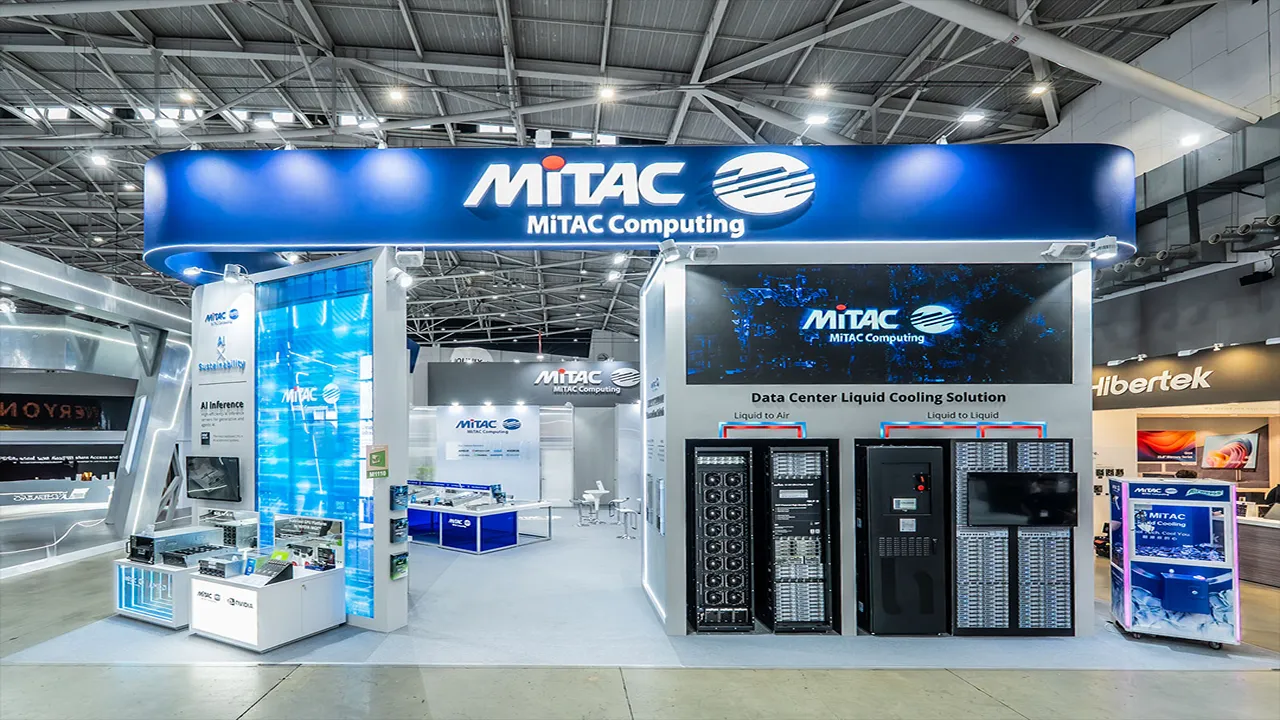Introduction: The Green AI Race and MiTAC's Role
Against the backdrop of the exponential growth in power required for training and operating artificial intelligence systems, the issue of data center energy consumption and environmental footprint is coming to the forefront. The "Green AI" trend is becoming not just a fashionable concept but an urgent necessity. At the recent COMPUTEX Taipei exhibition (May 20-23, 2025), MiTAC Computing Technology, a well-known division of MiTAC Holdings, demonstrated its vision and concrete solutions in this area, presenting MiTAC's Computex 2025 innovations|innovative energy-efficient servers and advanced cooling systems designed to create sustainable and environmentally friendly data centers for AI.
What MiTAC Presented: New Generation Servers and Smart Cooling
At the heart of MiTAC's exhibit were new-generation server platforms designed with an emphasis on improved heat dissipation and optimized airflow. Solutions supporting the latest processors and AI accelerators were shown, while also ensuring a reduction in overall energy consumption. MiTAC's innovations in cooling systems generated particular interest. The company presented both enhanced Direct Liquid Cooling (DLC) solutions and hybrid systems combining liquid and air cooling to achieve maximum efficiency. MiTAC representatives cited specific Key Performance Indicators (KPIs), demonstrating potential reductions in server energy consumption, improved Power Usage Effectiveness (PUE) for data centers, and a reduced carbon footprint when using their new developments.
Technical Details and Comparison with Market Giants
Architecturally, MiTAC's new systems feature high-density layout and modularity, allowing for flexible configuration of solutions for specific AI workload tasks. Although direct comparisons are always difficult due to differences in configurations and testing methodologies, experts at COMPUTEX noted that MiTAC's Computex 2025 innovations|MiTAC's offerings look competitive against some solutions from market leaders like NVIDIA (with their DGX systems), Dell, or Huawei, especially in the segment of customizable and OEM/ODM platforms. MiTAC is betting on open standards and integration flexibility, which may attract customers looking for alternatives to proprietary ecosystems.
Why Green Data Centers Are Critically Important
The rapid growth of AI infrastructures is leading to a colossal increase in their energy consumption. According to some estimates, data centers could account for a significant share of global electricity consumption by 2030. This not only increases operating costs but also poses a threat of equipment overheating and a serious environmental burden. Furthermore, there is growing pressure from investors, society, and regulators under the ESG (Environmental, Social, and Governance) agenda, demanding greater environmental responsibility from companies. Innovations in energy efficiency and cooling, like those offered by MiTAC, are becoming a key factor for sustainable AI development.
Target Audience and MiTAC's Market Prospects
MiTAC's solutions are aimed at a wide range of customers. These include hyperscalers managing huge cloud data centers, telecommunications companies developing edge components for AI, and fast-growing AI startups needing efficient and scalable infrastructure. MiTAC is actively developing partnerships with component manufacturers and software developers to create comprehensive solutions. Although the company faces serious competition, its focus on energy efficiency and customization, as well as its strong manufacturing capabilities in Taiwan, could secure it significant orders and participation in pilot projects for next-generation data centers.
Conclusion: The Evolution of Data Centers Towards a Sustainable AI Future
MiTAC's presentation at COMPUTEX 2025 once again underscored that the future of data centers for artificial intelligence is inextricably linked with the principles of sustainable development and energy efficiency. The company's MiTAC's Computex 2025 innovations|developments in servers and cooling systems are an important contribution to this evolution, offering the market tools to create a "greener" and more responsible AI infrastructure capable of meeting tomorrow's challenges.
